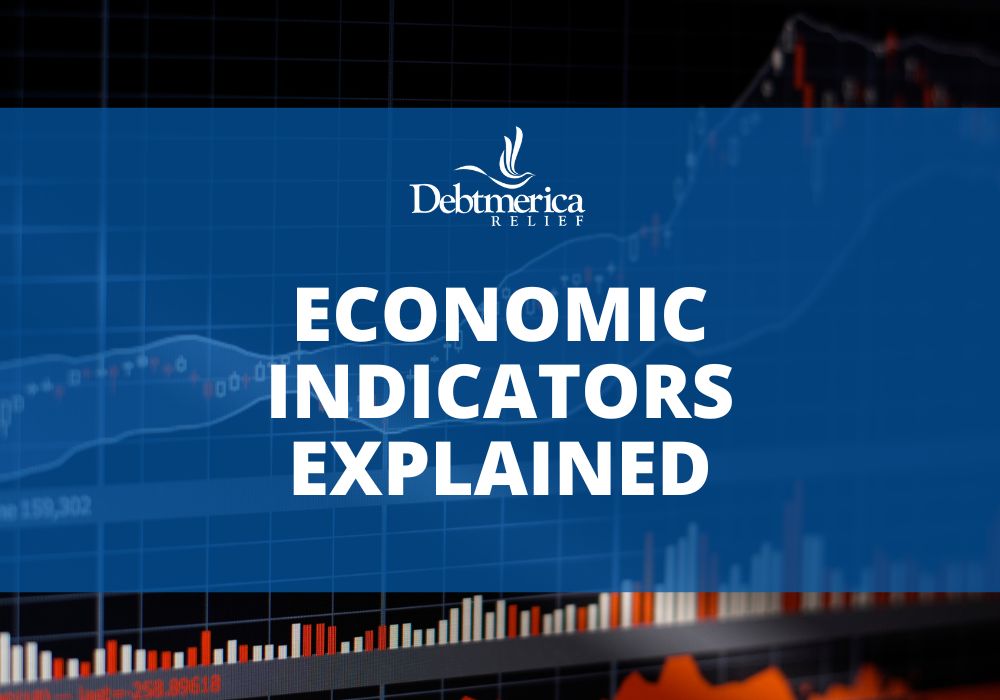Economic Indicators Explained

If you’re on a journey to pay off debt, you’ve probably focused on budgeting, side hustles, and cutting expenses—but have you ever considered how the broader economy affects your progress? Understanding economic indicators can give you a strategic edge. These statistics do more than inform stock traders or economists—they directly impact interest rates, job security, inflation, and the overall cost of borrowing. In this article, we’ll break down what economic indicators are, how they work, and why they matter to anyone trying to manage or eliminate debt.
What Are Economic Indicators?
Economic indicators are data points that track the performance and direction of the economy. They help show whether things are improving, slowing down, or remaining stable. For individuals working to get out of debt, these indicators can offer early warnings or green lights for financial decisions—whether it’s the right time to refinance a loan, ask for a raise, or build up your emergency fund.
There are three main types of economic indicators: leading, lagging, and coincident.
Leading Indicators
These indicators predict future economic conditions. They’re useful for spotting trends before they happen—especially helpful if you’re deciding when to lock in a fixed interest rate or brace for rising costs. Examples include:
- New building permits
- Consumer sentiment surveys
- Stock market performance
- Applications for new business licenses
If leading indicators show a downturn ahead, tightening your budget or holding off on new debt might be wise.
Lagging Indicators
Lagging indicators confirm trends after they’ve occurred. While not useful for predicting what’s next, they help validate whether economic changes are already underway. Examples include:
- Unemployment rate
- Consumer debt levels
- Corporate earnings
If the unemployment rate is rising, it may confirm what leading indicators already suggested—and signal that you should be cautious with credit use or increase your emergency savings.
Coincident Indicators
Coincident indicators show the current state of the economy. They don’t predict or confirm—they tell you what’s happening now. Examples include:
- Gross Domestic Product (GDP)
- Personal income levels
- Industrial production
If GDP is strong and personal incomes are rising, you may feel more confident paying off high-interest debt aggressively or investing in long-term goals.
Key Economic Indicators That Impact Debt
If you’ve ever asked yourself what are economic indicators and why they matter to your debt strategy, these are the ones to pay the most attention to.
Gross Domestic Product (GDP)
GDP measures the total value of goods and services produced within a country. It reflects how well the economy is performing. When GDP grows steadily, job opportunities and wages typically increase, making it easier to pay down debt. On the flip side, negative GDP growth can mean a recession—when job loss and tighter credit markets might force you to rely more on savings or delay debt repayment.
In the first quarter of 2025, the U.S. economy shrank slightly by 0.2%, after growing 2.4% at the end of 2024. This dip was mainly due to increased imports (which reduce GDP) and lower government spending, despite gains in investment, consumer spending, and exports. For those repaying debt, this signals a potential economic slowdown—so it’s wise to stay consistent with payments, build a small emergency buffer, and watch for possible interest rate drops that could make refinancing more affordable.
Unemployment Rate
The unemployment rate is a crucial metric for anyone carrying debt. A low rate means more job security, better prospects for raises, and a stronger ability to stay on top of payments. If unemployment rises, it might be time to pause big financial moves, boost your emergency fund, or explore additional income streams just in case.
In April 2025, the unemployment rate rose to 4.2%, up 0.3% from the same time last year, indicating a softening job market. For those working on debt repayment, this slight uptick could mean increased risk of job instability, so it’s a good time to prioritize steady payments, avoid new debt, and strengthen your emergency savings just in case.
Consumer Price Index (CPI) and Inflation
The CPI measures inflation by tracking the average price of common goods and services. When inflation is high, your dollars don’t stretch as far—which can make it harder to pay off fixed debt amounts like student loans or credit cards. If your wages don’t rise with inflation, your debt-to-income ratio can worsen, making you feel like you’re spinning your wheels.
As of April 2025, inflation rose 2.3% over the past year—slightly less than March’s 2.4% and the smallest annual increase since early 2021. For people repaying debt, slower inflation is a positive sign. It means everyday costs are rising more slowly, which can help stretch your budget further and leave more room for consistent debt payments.
Interest Rates (Federal Reserve)
Interest rates play a massive role in how expensive it is to carry debt. The Federal Reserve adjusts rates to control inflation and stimulate or slow down the economy. When interest rates are high, credit card debt and variable-rate loans become more costly. Lower interest rates, on the other hand, present a prime opportunity to refinance existing debt at more favorable terms.
The Federal Reserve is holding interest rates steady between 4.25%–4.50% to keep pushing inflation toward its 2% goal, with the current effective rate at 4.33%—down from 5.33% a year ago. With investors now expecting three to four rate cuts in 2025, this could signal lower borrowing costs ahead, making it a smart time to plan for refinancing or locking in better rates as you tackle your debt.
Consumer Confidence Index (CCI)
The CCI reflects how optimistic or pessimistic people feel about the economy and their personal finances. If confidence is high, people tend to spend more and take on new debt, expecting they can pay it off. Low confidence can signal economic uncertainty, and during these periods, paying down debt may become more urgent in case of job loss or rising expenses.
In May 2025, the Consumer Confidence Index jumped to 98.0 from 85.7 in April, ending a five-month decline and signaling renewed optimism about the economy. For those paying off debt, rising confidence can mean more job stability and spending power, but it’s still wise to stay disciplined and avoid overextending financially during periods of renewed economic hope.
Retail Sales and Durable Goods Orders
These indicators track consumer spending, which accounts for a significant portion of economic activity. Strong retail sales often suggest people are earning and spending more, which could be a good sign for job stability. If these numbers drop, it might mean a slowdown is coming—potentially affecting your income and making it harder to manage debt.
In April 2025, U.S. durable goods orders dropped 6.3%, mainly due to a 17.1% fall in transportation equipment orders, while retail sales rose slightly by 0.1%—a slower gain than the previous month. Year-over-year retail sales stayed steady with a 5.2% increase. For those managing debt, this mixed data suggests cautious spending habits and potential economic softness, so it’s wise to keep a close eye on your budget and debt payments.
Why These Indicators Matter for Debt Repayment
When you understand what economic indicators are and how they impact your personal finances, you can make smarter decisions about debt. For example, watching interest rate trends could help you time a credit card balance transfer or mortgage refinance. Tracking inflation can alert you when it’s time to rework your budget to prevent falling behind on payments. Paying off debt isn’t just about discipline—it’s also about strategy. Economic indicators give you insight into timing, risk, and opportunity. They don’t predict your financial future, but they can definitely help shape it.
How to Use Economic Indicators in Your Debt Strategy
- Monitor interest rates: If you have variable-rate debt, rising interest rates can increase your monthly payments. Consider refinancing when rates are low.
- Watch job market trends: A rise in unemployment might mean it’s time to pause aggressive debt payments and prioritize saving.
- Keep an eye on inflation: If your cost of living goes up, adjust your budget before falling behind on payments.
- Track consumer confidence: When confidence dips, lenders may tighten credit. Staying ahead on payments improves your creditworthiness in uncertain times.
Conclusion
So, what are economic indicators? They’re essential tools for understanding the broader forces that shape your financial life. For anyone focused on debt repayment, these numbers aren’t abstract—they’re a practical guide to what might be coming and how to prepare. By learning how to interpret indicators like GDP, inflation, unemployment, and interest rates, you can position yourself to make smarter, more confident decisions on your journey to becoming debt-free. And if your debt ever feels overwhelming or unmanageable, don’t hesitate to consult with a debt professional for guidance tailored to your unique situation. Debtmerica Relief has over 18 years of experience in providing relief to our clients whose financial burdens have become too much to handle.
If you need help with debt, contact us for a free consultation.


